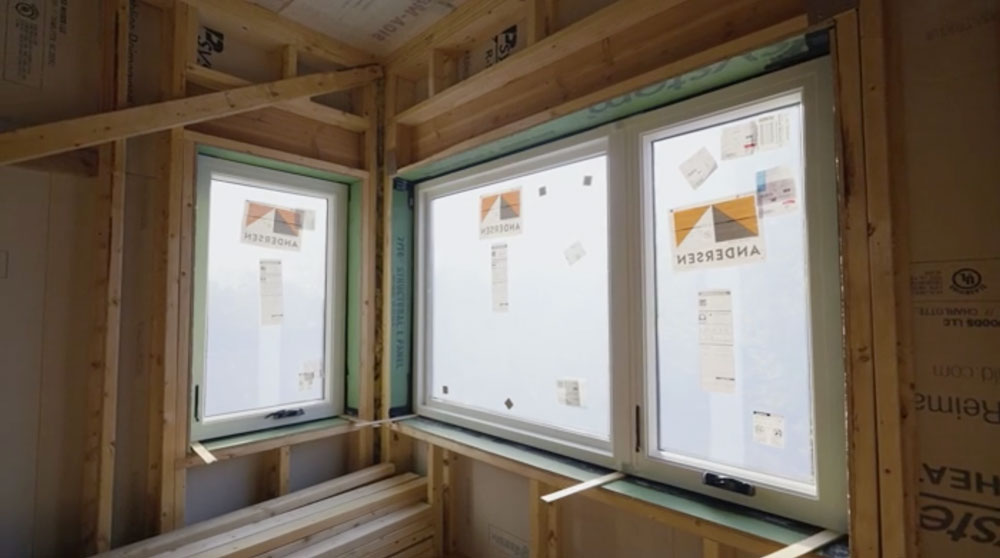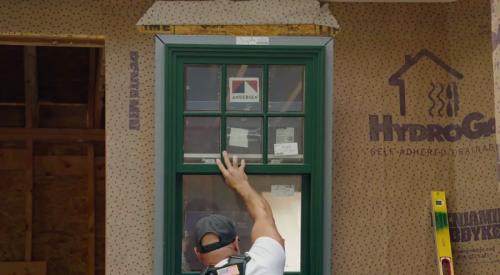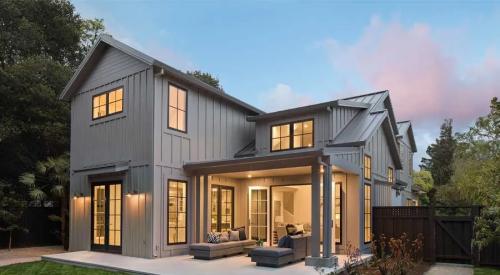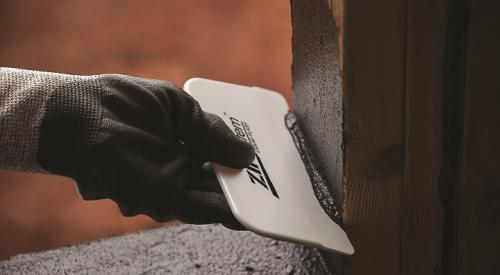There are a few important considerations that go into creating an energy-efficient home. However, a big budget isn’t necessarily one of them. It’s more about using quality materials and products like windows, as well as a carefully considered strategy that maximizes sustainable performance.
Energy Efficiency Essentials
Jake Bruton, a residential builder, shared his thought process for making sure all the elements of a new home work together to create optimum energy savings.
First, he recommends a continuous air barrier that’s created by a concrete foundation, combined with high-quality sheathing on above-grade exterior walls and on the ceiling of the top floor. He also uses thermal break studs instead of traditional ones to create an insulating air barrier between the exterior and interior walls.
Secondly, proper placement of the mechanicals is key. In a recent project Bruton worked on, the HVAC system was installed in a plenum positioned below the attic. With proper sheathing and the vapor control provided by specialized adhesive tape, the HVAC system was more efficient than it would have been if placed in an attic with even minor air incursion, thus requiring less energy to do its job.
Finally, energy-efficient windows were the finishing touch. The project in question utilized Andersen 100 Series® casement and picture windows, which have features that make them more airtight than other windows in the market. Let’s take a closer look.
Windows Make the Difference
Here’s the interesting part. The 100 Series is Andersen’s most economical line of windows, yet it provided this home with a truly impressive level of airtightness. While the windows in this line are available in every imaginable style, Bruton opted for casements because they compress into the frame in windy conditions, blocking air leakage. And because the picture windows are fixed into their frames and don’t open, they admit plenty of light while also blocking unwanted airflow.
The right glass is also important for maximizing energy efficiency. It should be selected specifically for the homesite’s weather conditions to help maintain a comfortable interior temperature. Having glass that reflects heat in warmer months and helps insulate the interior in cooler months means lower energy bills for the homeowner living in a variable seasonal climate. However, there are other types of glass available for primarily hot or cold climates, including some that can filter out UV rays or actually absorb solar energy.
Let’s not forget the frames. Fibrex®, the material from which Andersen’s 100 Series window frames are made, is a composite of PVC and recycled wood. That material is twice as strong as vinyl alone, with a finish that’s 12 times thicker than plain painted vinyl. That means the frames are far more resistant to warping in even the most extreme climates, a problem that can result in air leaks and significantly greater energy consumption.
Economy and Quality
When working within a specific budget, it’s true enough that the more you spend on the building envelope — including the windows — the less money you’ll have available to spend on the mechanicals. However, it’s also a fact that if you design the building envelope right, you won’t need to spend as much on the mechanicals. A well-constructed envelope yields energy savings and sustainability benefits throughout the lifetime of the home, making it a better choice for the environment and for the prospective buyer.
In particular, windows like the Andersen 100 Series offer excellent performance at an economical price, meaning an even better overall value proposition and enhanced environmental responsibility.
For more information, visit andersenwindows.com.














